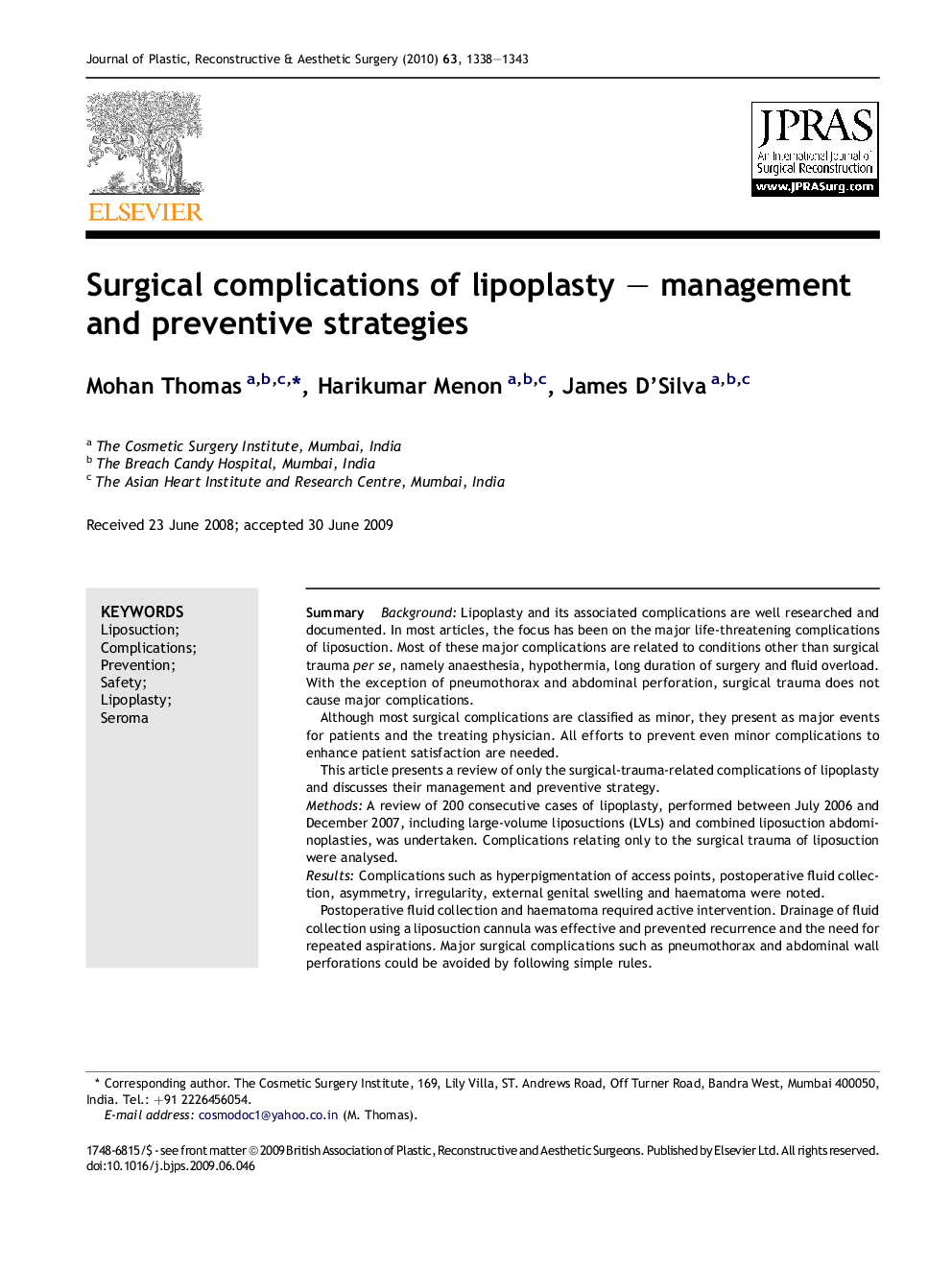| Article ID | Journal | Published Year | Pages | File Type |
|---|---|---|---|---|
| 4119308 | Journal of Plastic, Reconstructive & Aesthetic Surgery | 2010 | 6 Pages |
SummaryBackgroundLipoplasty and its associated complications are well researched and documented. In most articles, the focus has been on the major life-threatening complications of liposuction. Most of these major complications are related to conditions other than surgical trauma per se, namely anaesthesia, hypothermia, long duration of surgery and fluid overload. With the exception of pneumothorax and abdominal perforation, surgical trauma does not cause major complications.Although most surgical complications are classified as minor, they present as major events for patients and the treating physician. All efforts to prevent even minor complications to enhance patient satisfaction are needed.This article presents a review of only the surgical-trauma-related complications of lipoplasty and discusses their management and preventive strategy.MethodsA review of 200 consecutive cases of lipoplasty, performed between July 2006 and December 2007, including large-volume liposuctions (LVLs) and combined liposuction abdominoplasties, was undertaken. Complications relating only to the surgical trauma of liposuction were analysed.ResultsComplications such as hyperpigmentation of access points, postoperative fluid collection, asymmetry, irregularity, external genital swelling and haematoma were noted.Postoperative fluid collection and haematoma required active intervention. Drainage of fluid collection using a liposuction cannula was effective and prevented recurrence and the need for repeated aspirations. Major surgical complications such as pneumothorax and abdominal wall perforations could be avoided by following simple rules.ConclusionsMajor complications related to surgery can be avoided by following well-known safety guidelines.To enhance patient satisfaction, minor complications related to surgical trauma need to be addressed aggressively. This article discusses methods to lower the incidence of most surgical complications.
